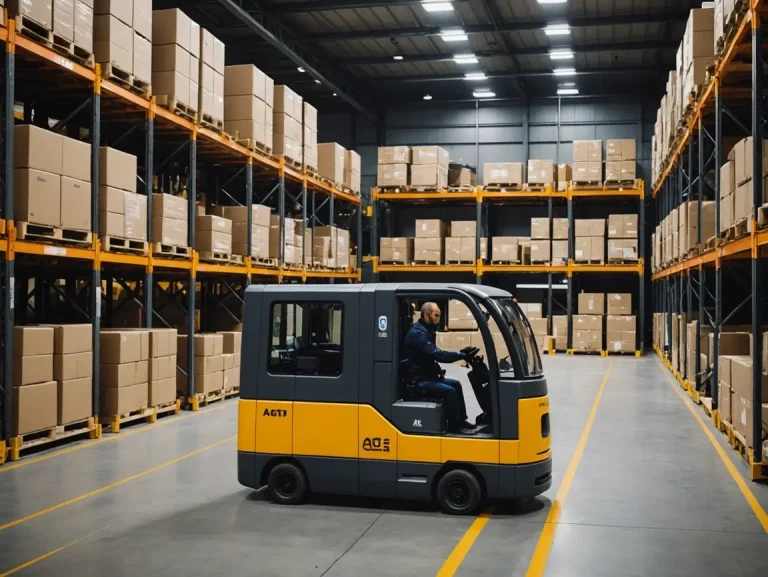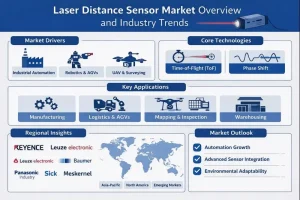Global AGV/AMR Market Overview: Transforming Automation Worldwide
The AGV/AMR market has been gaining remarkable momentum in recent years, fueled by the rapid adoption of automation technologies across various industries. AGV (Automated Guided Vehicles) and AMR (Autonomous Mobile Robots) are revolutionizing how businesses handle material transportation, logistics, and manufacturing processes. This article provides a comprehensive overview of the global AGV/AMR market, highlighting key trends, market drivers, challenges, and future outlook.
Understanding AGV/AMR: The Backbone of Modern Automation
Automated Guided Vehicles (AGVs) and Autonomous Mobile Robots (AMRs) serve similar—but distinct—roles in industrial automation. AGVs are vehicles that follow fixed routes determined by markers such as magnetic strips, wires, or lasers, typically used in warehouses and production facilities for repetitive transport tasks.
On the other hand, AMRs are equipped with advanced sensors, cameras, and AI algorithms to navigate dynamic environments independently without relying on fixed infrastructure. This adaptability makes AMRs ideal for complex, ever-changing workplaces such as distribution centers.
Both technologies streamline operations by reducing labor costs, increasing safety, and improving efficiency—factors driving their growing market demand worldwide.
Key Drivers Fueling the AGV/AMR Market Growth
Several market forces contribute to the expanding demand for AGV/AMR solutions:
1. Rising Labor Costs and Workforce Shortages
Industries such as manufacturing and logistics face increasing labor expenses alongside difficulty recruiting and retaining skilled workers. AGV/AMR systems alleviate these challenges by automating repetitive and hazardous tasks, allowing human employees to focus on higher-value activities.
2. Expansion of E-commerce and Warehousing Needs
E-commerce growth has sparked a surge in global warehousing activity, requiring faster, more accurate material handling systems. AGVs and AMRs enable warehouses to scale operations while maintaining productivity and minimizing errors during order fulfillment.
3. Advances in AI and Robotics Technology
Breakthroughs in machine learning, computer vision, and sensor technology have enhanced the capabilities of AMRs, expanding their applicability. This tech evolution makes AMRs more flexible, safer, and efficient, encouraging broader adoption.
4. Increasing Focus on Operational Efficiency
Enterprises are under constant pressure to optimize supply chain processes and reduce downtime. Implementing AGV/AMR systems can significantly increase throughput and ensure consistent workflow continuity.
Regional Insights: Where is the AGV/AMR Market Expanding?
The global market for AGV and AMR solutions is experiencing varied growth patterns across regions:
-
North America leads with substantial investments in automation due to its mature manufacturing base and advanced technological infrastructure. The adoption of AI-powered AMRs is particularly strong here.
-
Europe follows closely, propelled by government incentives promoting Industry 4.0 and automation in automotive and aerospace sectors.
-
Asia-Pacific represents the fastest-growing market, driven by rapid industrialization, especially in China, Japan, South Korea, and India. The region’s focus on smart factories boosts demand.
-
Latin America and MEA regions are gradually tapping into AGV/AMR potential, though economic and infrastructural challenges limit speed of adoption.
Challenges in AGV/AMR Market Adoption
Despite exciting opportunities, several challenges continue to impact wider AGV/AMR deployment:
-
High Initial Investment: The upfront cost of AGV/AMR systems can be prohibitive for small and medium enterprises, limiting accessibility.
-
Integration Complexity: Incorporating autonomous systems into existing workflows requires technical expertise and customization, sometimes causing operational disruptions.
-
Safety and Regulatory Concerns: Operating robots alongside human workers necessitates stringent safety protocols and compliance with regional regulations.
-
Technology Limitations: Although improving rapidly, certain AMRs still face difficulties navigating highly cluttered or unstructured environments.
Market Outlook: The Future of AGV/AMR Solutions
The global AGV/AMR market is projected to maintain robust growth over the next decade. Analysts foresee integration with emerging technologies such as IoT, 5G connectivity, and advanced analytics, enabling smarter, more connected fleets of mobile robots.
Moreover, hybrid models combining AGV reliability with AMR flexibility are expected to emerge, catering to diverse industrial needs. Increasing collaborations between robotics firms, software developers, and logistics providers will further drive innovation and adoption.
As sustainability initiatives gain traction, AGV/AMR systems also offer environmental benefits by optimizing energy use and reducing carbon footprints in automated facilities.
Conclusion
The trajectory of the AGV/AMR market underscores a pivotal transformation in industrial automation worldwide. By enhancing operational efficiency, minimizing human risks, and enabling intelligent workflows, AGV and AMR technologies are essential tools for companies striving to stay competitive in today’s fast-paced economy.
With ongoing advancements and expanding applications, stakeholders must stay informed about market developments, strategically invest in scalable solutions, and adapt to emerging trends. Doing so will unlock significant benefits and position businesses at the forefront of the automation revolution.




